Step through the doors of Communities United (CU), a Chicago-based racial justice organization that works with area youth, and you’ll be enveloped in art. The walls are alive with giant Polaroid snapshots painted on floor-to-ceiling panels with an array of images—a vibrant sunset, towering palm trees, a sunflower and a rendering of the iconic red Wrigley Field sign—all created by young people who have embarked on a racial healing journey that bridges art with healing and community action.

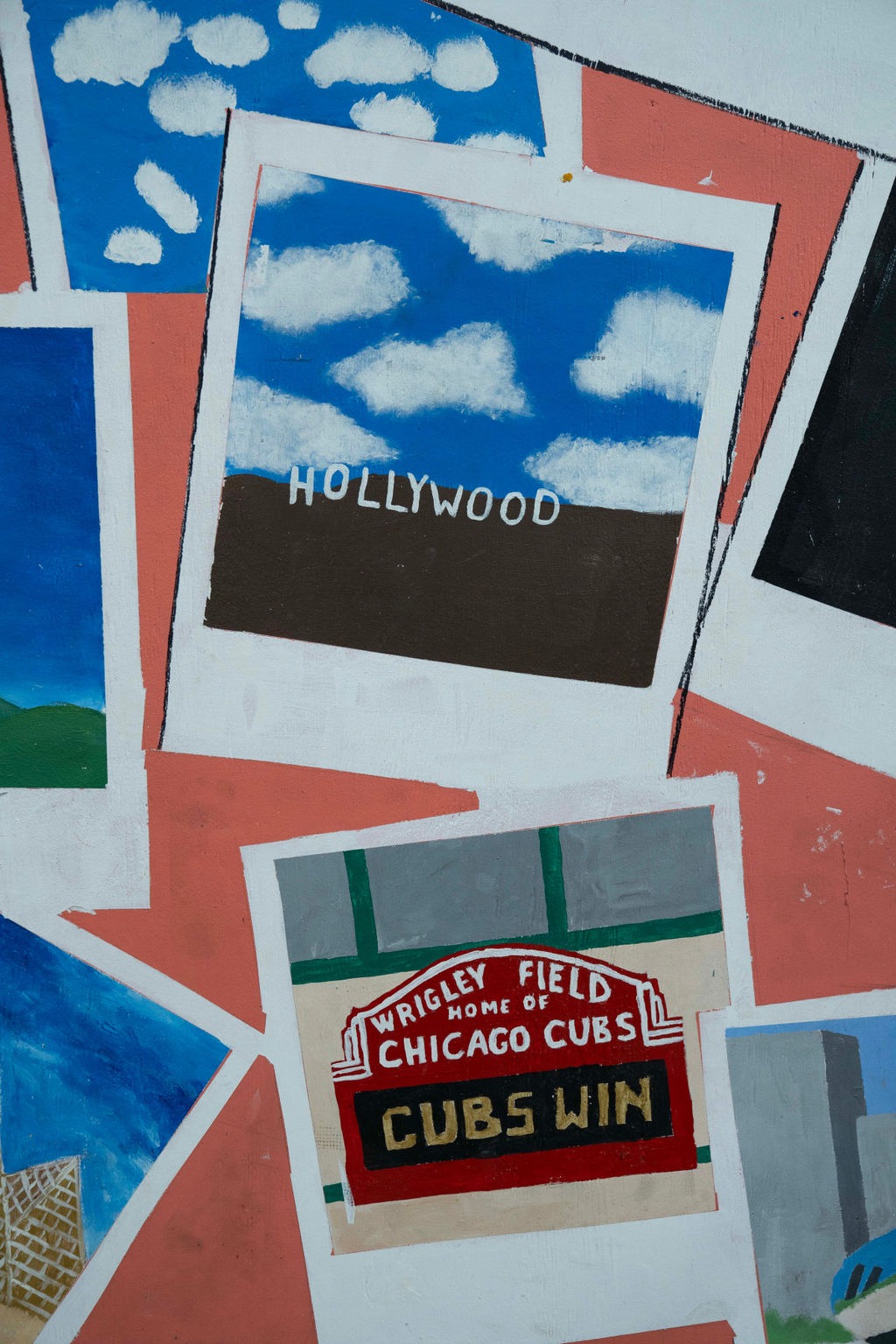
One of those young voices at CU belongs to Romya Simone, a junior at a local high school on Chicago’s North Side. “I’ve always done some kind of art,” said Simone. “When I started, it was mostly painting, but now, I do much more, including sketching and drawing.”
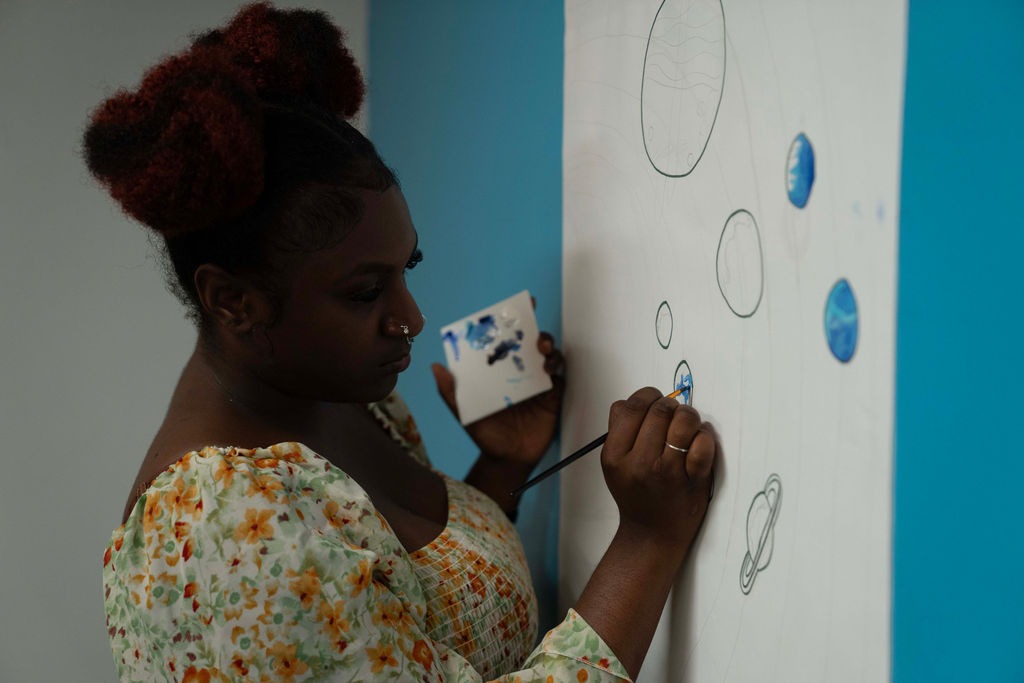
Simone has not only found sketchbooks, blank canvases and paint to convey her dreams and aspirations at CU—she’s found a welcoming community of her peers. “We really work to create a safe place for our youth. We’re providing the opportunity for them to express themselves with no judgment,” said Laqueanda Reneau, a youth organizer at CU.
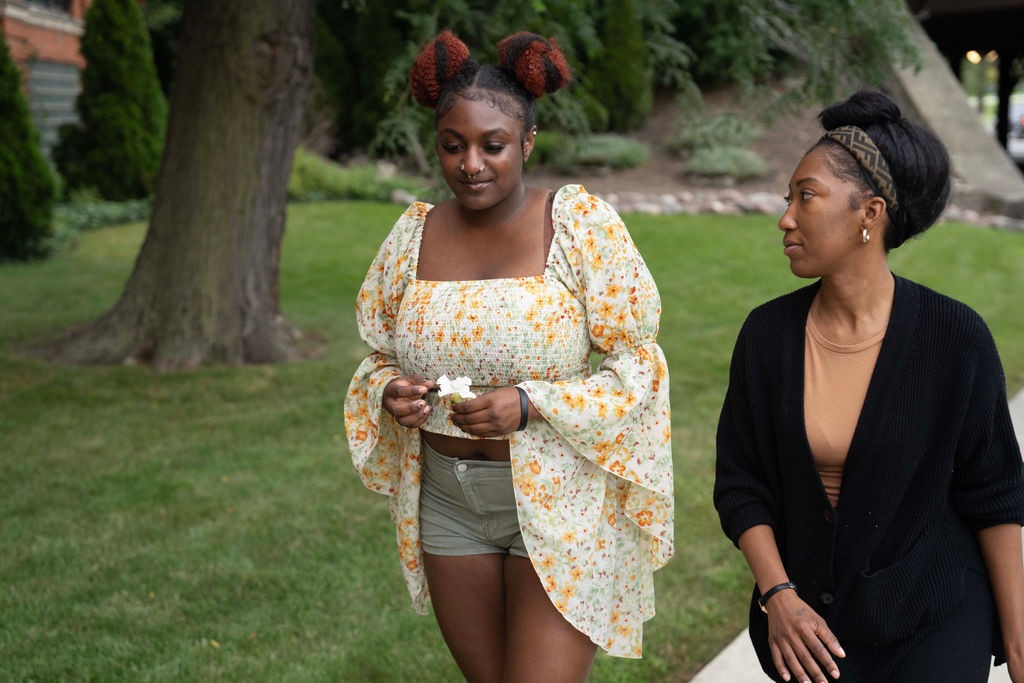
The artistic evolution Simone and others here have experienced reflects CU’s broader mission: helping young people take ownership of their experiences and use art and advocacy as vehicles for healing.
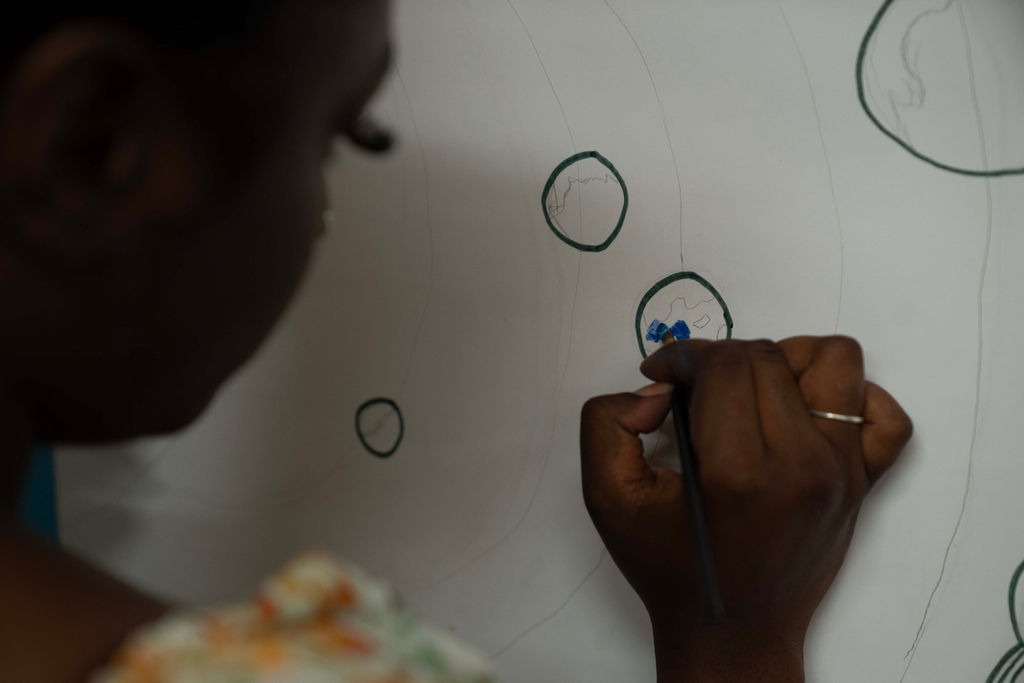
CU is an intergenerational racial justice organization with young people at the center. Many of its organizers and youth leaders have lost friends and loved ones to gun violence or witnessed its devastating impact on the city. “That’s the only thing that some people think of when they think about Chicago and our young people,” Reneau said. The art, she explained, is not just a way to process pain; it helps students find their voice to help change that narrative.
Mirrors, Windows and Doors
“We call our approach Healing Through Justice, and its components are exemplified by mirrors, windows and doors,” said Reneau. “The mirror reflects who you are and how your lived experience shapes you; the windows are about how you build common ground with others; and the doors are about how we work together to open the doors of opportunity for all.”
This framework runs through all aspects of CU’s work. The organization’s engagement initiatives unlock opportunities to take the lead in creating a safer, more empowered community for themselves and their families.

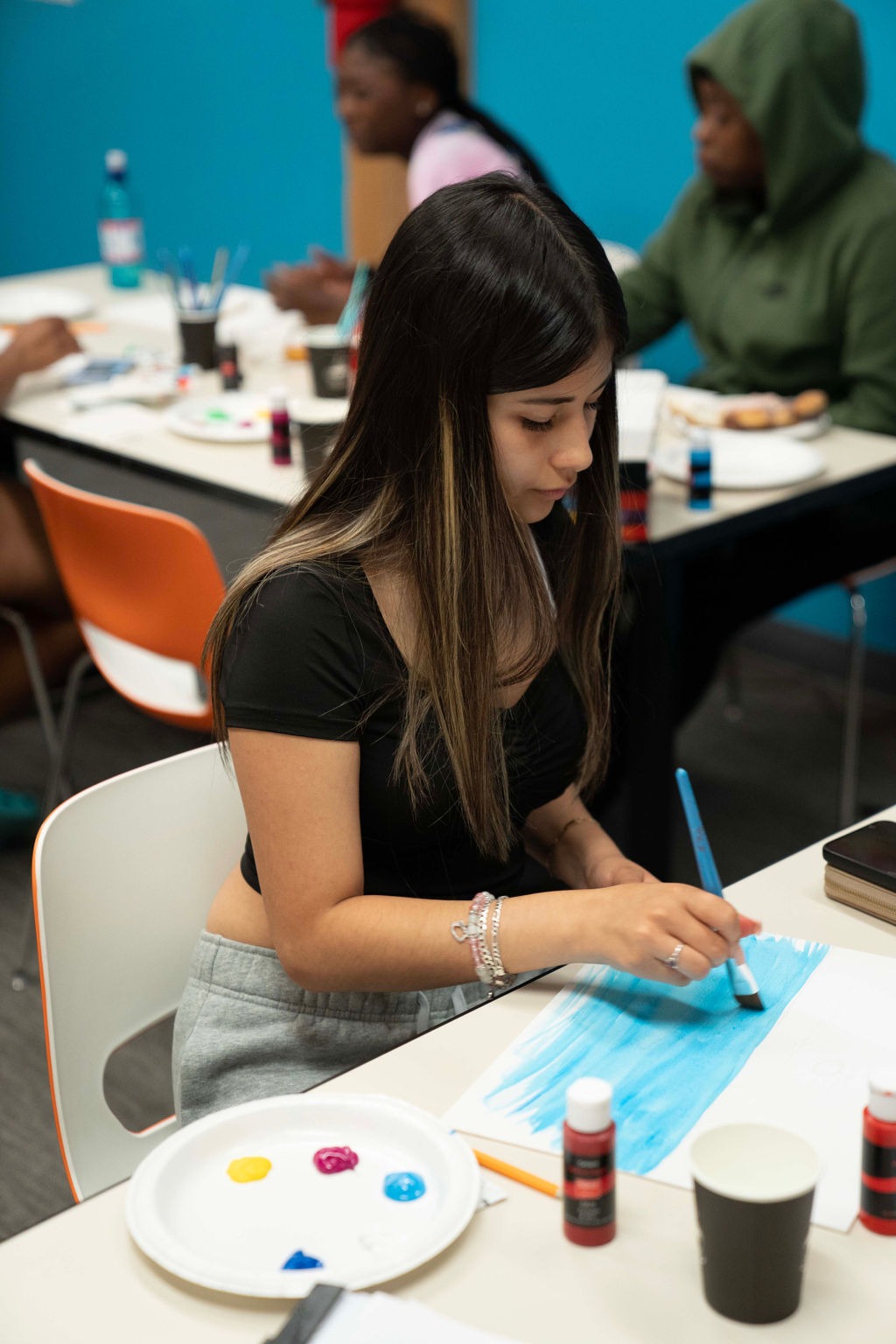
“Being here at CU helps me feel more confident in sharing my story. I get to tell people what my life is like—not them telling me,” said Simone. “I feel like I’m doing something important to help folks get it right.”
For Simone and her peers, CU is a platform to rewrite misconceptions about their communities.
“When Romya first came here she was a shy young thing, but now she’s leading discussions and evolving. I love seeing the transformation,” Reneau said proudly. “Oftentimes, they start quiet, but then they blossom. They are flipping the script.”

Creating a space for healing
One CU initiative, the Working on Knowledge and Equity Project, involves a partnership with five Chicago public schools that serve predominantly Black and Latinx communities. It seeks to help students understand how their lived experiences matter and can fuel their growth as leaders.
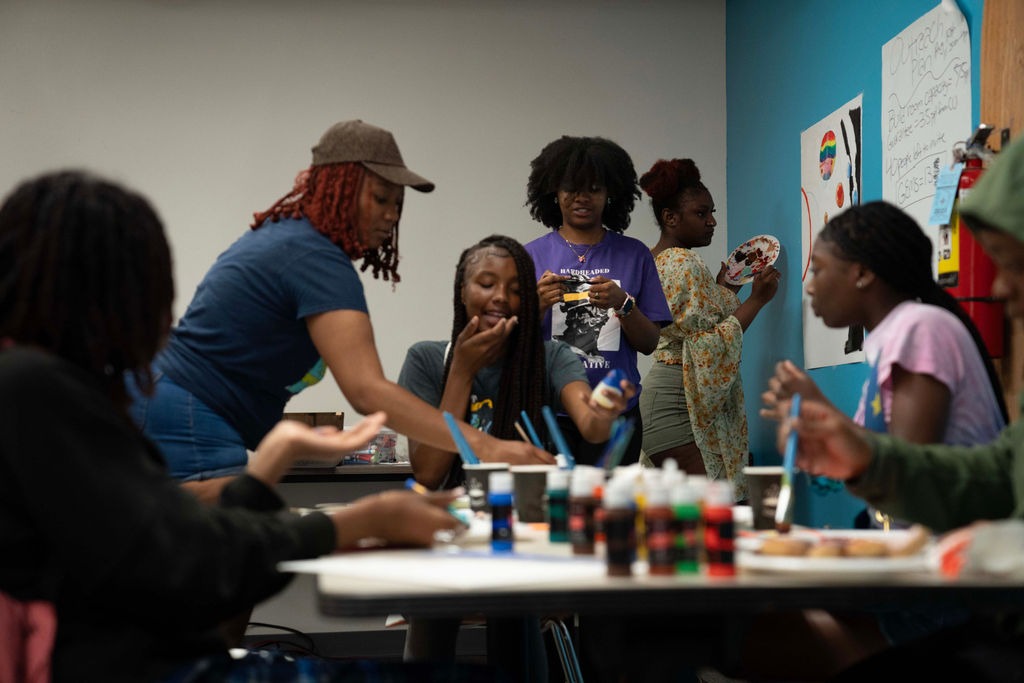
At one of the partner high schools on Chicago’s West Side, more than 30 students asked themselves: “What’s beautiful in our community? What do we hope to see in our future?” Their vision took shape in a mural, a stunning tribute to their neighborhood with vibrant depictions of community life, along with the students’ hopes and dreams.

Still, encounters with tragedy are far too frequent. Gun violence claimed the lives of three neighborhood youths, including two students during the project. For the students, work on the mural became a channel for candid and important conversations.

“So many of our young people are facing loss, and the mural became a way for them to express their grief and come together to heal,” said Reneau. “These conversations were designed to help them digest and process what happened, but we also wanted to create a space for hope and optimism.”


The finished mural features joyful scenes of life—a mother embracing her child, the vibrant colors of a community garden, a young girl gracefully dancing ballet and proud graduates with diplomas in hand—alongside poignant tributes to the lives of friends lost too soon.
Advocacy in Action
Once the mural was complete, the students and CU staff knew they had to share it beyond their immediate community. In May 2024, 50 students and 100 other community members traveled to the state capitol in Springfield, Illinois for Advocacy Day, bringing their mural and their personal stories to lawmakers.
Among those participating was Royshawn Farmer, a high school student and CU leader who spoke to lawmakers during Advocacy Day. In the weeks leading up to the event, Farmer, Simone and their peers spent hours refining their presentations, practicing ways to show up with confidence, make eye contact, project their voices and share stories with lawmakers that honored the experiences of their communities and prioritized solutions.
“I tried to speak off the cuff and take my time,” said Farmer. “There were a lot of people there. The experience was good. I talked about the loss of our young people to gun violence and how it was hard on our school and community.”
For Simone, speaking at Advocacy Day was a chance to connect across generations. “I’m sharing with older folks who may not know about our experience,” she said. “It was a lot of fun and felt really important.”
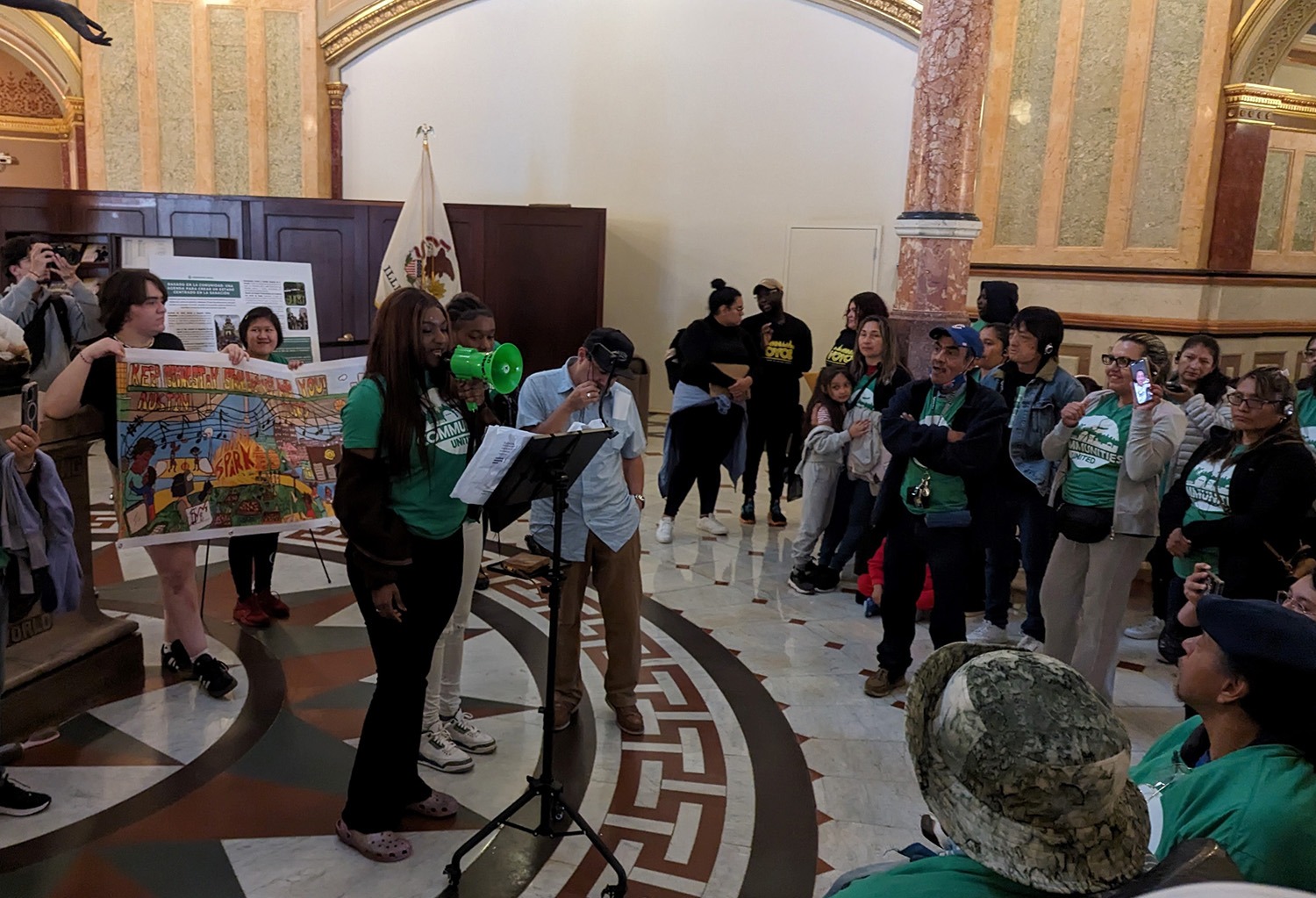
“When a young person leads a meeting, mentors another student, shares their story with a lawmaker or speaks at an event—it’s a beautiful thing to witness,” observes Reneau.
For the youth of CU, the racial healing journey is not just a personal journey but a communal one. It’s a process of confronting systemic barriers, reclaiming narratives and building a future where every voice matters and every story is heard. Through art, advocacy and action, they are opening those doors, one mural, one conversation and one meaningful change for the better at a time.
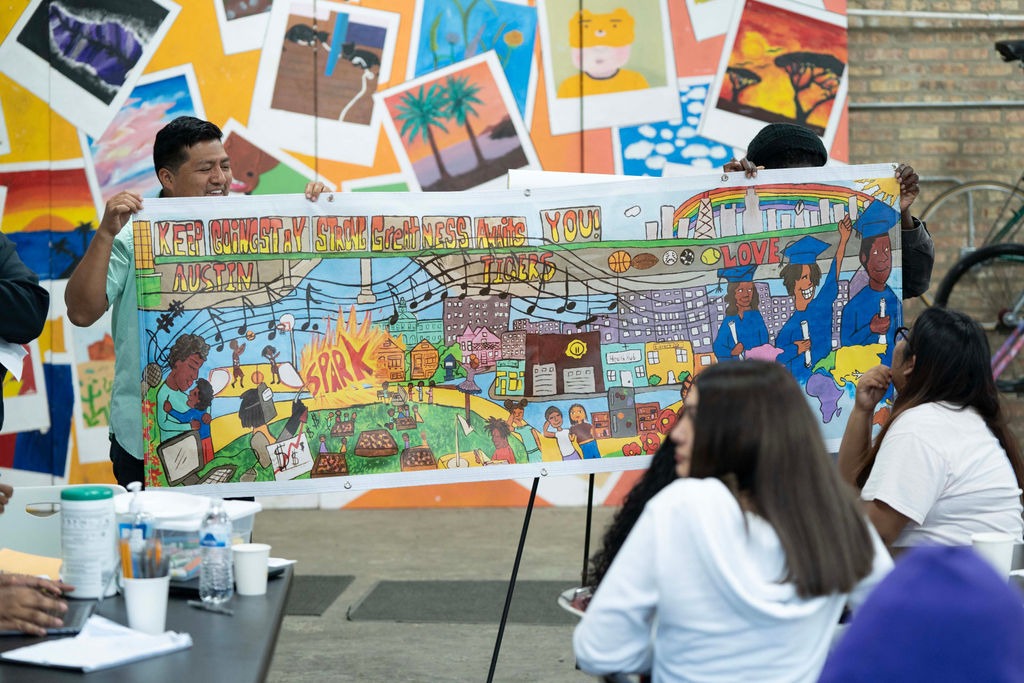
Communities United, together with its partners, is an awardee of the Racial Equity 2030 Challenge grant, a global call to advance racial equity in the next decade. Communities United is using a healing through justice model to help youth heal and create transformational change throughout Chicago.
RELATED LINKS
- A Youth-Led Strategy to Heal Marginalized Chicago Communities Through Justice
- Healing Through Action
- Announcing the Five Global Awardees for Racial Equity 2030
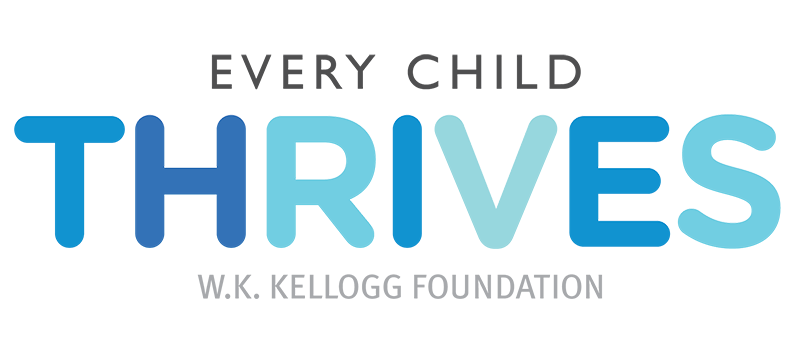

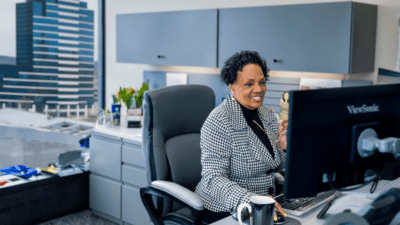

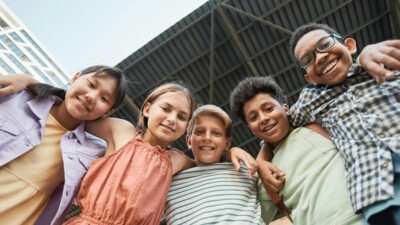
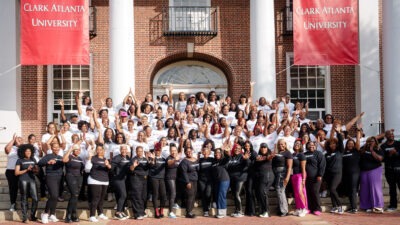
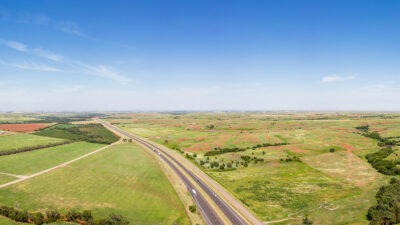
Comments